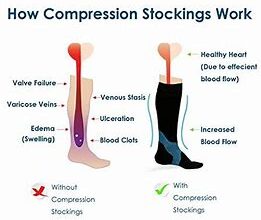
Education systems around the world vary greatly in structure, curriculum, and approach. Each country combines its own unique set of methods and goals to provide its students with the best education possible. In this article, we will explore the educational systems of different countries, focusing on their similarities and differences.
One of the most recognized educational systems in the world is found in Japan. The Japanese system is known for its academically heavy curriculum and strong emphasis on competition. Students in Japan have long school days and often participate in extracurricular activities and group studies, in addition to their regular classes and homework.
On the other hand, countries like Germany and the United States offer more flexible approaches to education. In Germany, for example, students are assessed and placed into different types of schools based on their academic abilities. The Hauptschule is a hands-on vocational school that prepares students for practical careers, while the Gymnasium provides a more academically challenging curriculum, similar to a college-preparatory program. In the United States, students have more choice in the subjects they study, with a wide range of elective courses available in arts, sciences, and other fields.
These differences in structure and curriculum also reflect variations in cultural values and goals. In Japan, the goal of education is often seen as achieving high academic results, leading to admission to prestigious universities. In Germany, the focus is on providing students with practical skills and preparing them for specific careers. In the United States, a more well-rounded education is encouraged, with a focus on emotional and social development in addition to academic achievement.
Overall, while there are similarities across educational systems, such as the importance of homework, assessment methods, and the recognition of the need for practical learning, the differences between countries offer interesting insights and perspectives. Exploring these various approaches can help us better understand the strengths and weaknesses of each system and potentially inspire improvements in our own educational practices.
School Systems around the World
In comparing school systems around the world, it is clear that there are diverse approaches to education that vary across countries. The structure and aims of these systems often differ significantly, as do the methods of teaching and the curriculum offered.
One key distinction between school systems is the promotion of multi-age classes. This educational philosophy aims to cater to the individual needs of students by grouping them based on their level of thinking and progress rather than just their age. Examples of this approach can be seen in Montessori and other progressive educational systems.
Another important aspect is the standardized curriculum. In some countries, such as Japan and South Korea, there is a strong emphasis on standardized testing and competition. These systems often have a rigid and uniform structure where the primary goal is to foster discipline and academic achievement. In contrast, other countries place a greater emphasis on fostering creativity, problem-solving skills, and the arts.
The curriculum varies across systems as well. Some countries offer a more varied curriculum that includes not only core subjects like mathematics and English but also vocational training and specialized skills. These countries value a well-rounded education that caters to the diverse needs of their students.
The funding of schools also differs across countries. Some systems, like those in Japan and South Korea, are highly funded and recognized for their high-quality education. In other countries, such as the Hauptschule system in Germany, there is a focus on vocational training and preparing students for specific careers.
Assessment and teaching methods also play a significant role in different school systems. In some countries, like Japan and South Korea, there is a strong emphasis on rote memorization and rigorous testing. In contrast, other systems, like those found in Finland, focus on fostering responsibility and critical thinking skills.
Overall, the educational systems across the world are diverse and aim to meet the unique needs of their students. Whether it is through multi-age classes, varied curriculums, or different approaches to teaching and assessment, each country has its own philosophy and goals for education.
Education in the United States
The educational system in the United States operates at multiple levels, with each level having its own distinct characteristics and structures. In the U. S., education is compulsory for children from the age of six to sixteen, and there are different options for schooling.
Public schools, which are funded by the government, are the most common and widely accessible form of education in the United States. Private schools, on the other hand, are often seen as providing a higher quality of education, but they usually require tuition fees.
In the United States, education focuses on a wide range of subjects, including mathematics, social sciences, language arts, and physical education. Students typically study these subjects in separate classes, with different teachers for each discipline.
One distinctive feature of the American educational system is the emphasis on standardized testing. Students are regularly evaluated through exams and assessments that are designed to measure their progress and understanding of the material. These standardized tests play a crucial role in determining a student’s academic performance and future opportunities for higher education.
Primary education in the United States includes elementary school and junior high school. Elementary schools often follow a multi-age structure, where students from different grade levels are placed in the same classroom. Junior high school typically encompasses grades seven through nine.
High school education in the United States is divided into four years: freshman, sophomore, junior, and senior years. During this time, students have the flexibility to choose from a variety of elective courses that align with their interests and educational goals.
The United States also offers vocational education, which is designed to provide students with specific skills and knowledge for entering the workforce. Vocational schools and programs focus on developing practical skills in areas such as mechanics, healthcare, and technology.
In the United States, the education system plays a significant role in society and is recognized as an important factor in individual and societal success. The American educational system aims to prioritize the individual needs of students while also preparing them to be active and contributing members of society.
Across the United States, educational standards may vary from state to state, with each state having its own set of guidelines and requirements. However, there are also national standards in place to ensure a certain level of educational quality and consistency.
Overall, education in the United States is known for its emphasis on independence, critical thinking, and competition. The American education system aims to provide students with a well-rounded educational experience that includes not only academic learning but also social and emotional development.
Examples of alternative educational approaches in the United States include Montessori schools, which prioritize individualized and hands-on learning experiences, and charter schools, which are publicly funded but operate with more independence and flexibility in their curriculum and teaching methods.
| Pros | Cons |
|---|---|
| Provides access to education for all children | Tuition fees for private schools |
| Emphasizes a wide range of subjects | Varied educational standards across states |
| Prepares students for higher education and the workforce | Standardized testing can lead to a narrow focus on exam preparation |
| Flexibility in choosing elective courses | Competition and pressure to succeed |
Schooling in European Countries
European countries have a variety of educational systems that prioritize the development of independent thinkers. One of the unique approaches to education found in Europe is the Montessori method, which places an emphasis on hands-on learning and individualized instruction. In countries like Germany, students often attend “Gesamtschulen,” which are schools that combine primary and secondary education. These schools offer a more integrated and practical approach to learning.
Another example of schooling in European countries is the multi-age classroom model. Instead of students being grouped by age, students of different ages learn together, which allows for peer-to-peer learning and encourages students to work at their own pace. This approach can be found in countries like France and the Netherlands.
Some European countries also have specialized schools, such as international schools or schools that follow the International Baccalaureate curriculum. These schools often have a more diverse student population and offer a wide range of subjects to cater to the varied educational needs of students. Tuition fees may apply for these schools.
In terms of secondary education, European countries have different systems. In some countries, such as the United Kingdom, students take standardized exams called “A-levels” to gain entrance into university. In others, like Finland, Germany, and the Netherlands, students have more options and can choose between academic or vocational tracks. The focus is often on developing practical skills and preparing students for specific careers.
Across European countries, the education system also values the emotional and social development of students. Homework and discipline might be less emphasized, and instead, there is a prioritization of responsibility and independence. Schools create a safe and supportive environment for students to explore their interests and develop a sense of self. Competition is often not as intense as in other parts of the world, and group work is encouraged.
In conclusion, European countries have a diverse range of educational systems that cater to the needs of students at different ages and levels. From Montessori schools to multi-age classrooms, European education approaches are recognized for their focus on independence, practical skills, and emotional development.
Asian School Systems

Asia is home to some of the most progress and innovative education systems in the world. Each country has its own unique approach to education, but they all share a common goal: preparing students for success in a rapidly changing society.
One common characteristic of Asian school systems is a strong emphasis on academics. Many Asian countries prioritize subjects like mathematics, science, and language arts in their curriculums, and students often spend long hours studying and completing homework. This heavy focus on academics is seen as essential for success in the competitive job market.
Asian school systems also tend to have a more disciplined approach to teaching. Students are expected to show respect for teachers and adhere to strict rules and regulations. This approach helps to foster a structured learning environment where students can focus on their studies.
Another notable feature of Asian schools is the integration of hands-on and practical learning experiences. Students are encouraged to apply their knowledge to real-world problem-solving and gain practical skills that can be used in their future careers. This approach helps students develop a well-rounded skill set and prepares them for the demands of the workforce.
In many Asian countries, the school system is divided into primary, secondary, and tertiary levels. Primary education is compulsory and typically lasts for six years. Secondary education is divided into lower secondary and upper secondary levels, with students having the option to pursue a more specialized track. Tertiary education focuses on higher education and includes universities and vocational schools.
Asian school systems also vary in terms of teaching approaches. For example, the Montessori approach, which emphasizes independent learning and hands-on activities, is highly valued in some countries. Furthermore, South Korea is known for its highly competitive tertiary entrance exams, while Japan’s hauptschule system provides a more flexible approach to secondary education.
In conclusion, Asian school systems place a strong emphasis on academics and discipline while also incorporating hands-on and practical learning experiences. These systems aim to prepare students for success in a fast-paced and competitive society. There are many examples of successful Asian education systems around the world, and their high-quality education is often valued by both local and international students.
Varied Curriculums and Approaches
One of the most prominent differences observed in educational systems worldwide is the varied curriculums and approaches followed by different countries and institutions. Each country has its own unique system, tailored to meet the specific needs and goals of its society.
In some systems, the curriculum is heavily focused on academic subjects, such as mathematics and sciences, with a strong emphasis on homework and grades. This approach encourages competition among students and prepares them for higher education or college. Other systems, like vocational schools, provide more practical training and focus on developing specific skills that will help students in their future careers.
Private schools, on the other hand, often have a more diverse curriculum that goes beyond the academic subjects. They also place a greater emphasis on the overall well-being of the student, including their emotional and social development.
Some educational systems follow a divided approach, where students are separated into different tracks or streams based on their abilities or interests. For example, in the European system, students may attend a hauptschule, which focuses on practical training and work experience, or an academic-oriented school, such as a gymnasium or lycée, which prepares students for higher education.
One widely recognized curriculum is the International Baccalaureate (IB) system, which is followed by educational institutions in various countries. The IB curriculum aims to provide a holistic educational experience, encouraging students to be well-rounded individuals who are not only academically competent but also culturally aware and globally minded.
Overall, the role of the curriculum and educational approach is to provide a framework for teaching and learning. It sets the goals and expectations for students of different ages and determines the subjects they will study. By offering varied curriculums and approaches, educational systems ensure that each student’s needs and strengths are valued and encouraged, contributing to their overall development and success.
Montessori Education
One of the key features of Montessori education is the mixed-age classes. This approach allows students of different ages to work together, creating a sense of community and collaboration. Students are encouraged to learn at their own pace and follow their own interests, giving them the freedom to explore and develop their potential.
In contrast to other educational systems where standardized curriculums and teaching methods are the norm, Montessori education offers a more flexible and individualized approach. The curriculum is based on the needs and interests of the students, focusing on practical problem-solving skills and real-world applications. It also includes a strong emphasis on social and emotional development, teaching students responsibility and respect for themselves and others.
Montessori education is recognized internationally and has been adopted by many countries including the United States, Germany, and South Korea. In these countries, Montessori schools can be found at various levels, from preschool to high school. Montessori education prepares students for the world by developing their critical thinking skills, creativity, and love for learning.
Another notable aspect of Montessori education is the training that teachers undergo. Montessori teachers are specially trained to guide students in their learning journey, acting as facilitators rather than traditional instructors. They observe and support students as they engage in hands-on activities and provide guidance as needed. This approach allows the teacher to tailor their instruction to the individual needs of each student.
In conclusion, Montessori education offers a unique and effective educational approach that is recognized worldwide. With its focus on individualized learning, hands-on experiences, and social and emotional development, Montessori education prepares students to become well-rounded individuals who are prepared to succeed in an ever-changing world.
Advantages of Montessori Education

The Montessori education system is a highly regarded educational approach that has gained popularity globally. This method, developed by Maria Montessori in the early 1900s, emphasizes a hands-on and independent learning approach. It differs from the traditional educational systems in many ways, offering numerous advantages for students ranging from the ages of three to twelve.
- Individualized Education: Montessori education recognizes that each student has unique learning needs and abilities. The curriculum is tailored to the individual student, allowing them to progress at their own pace.
- Flexible Learning Environment: In Montessori classrooms, students have the freedom to choose their activities and explore various subjects. This approach fosters creativity, curiosity, and a love for learning.
- Multi-Age Classrooms: Montessori classrooms are often divided into mixed-age groups, allowing older students to mentor younger ones and creating a sense of community. This arrangement encourages collaborative learning and the development of social skills.
- Hands-On Learning: Montessori education places an emphasis on practical, hands-on activities. This approach allows students to engage with the material and develop critical thinking skills.
- Global Perspective: The Montessori philosophy encourages a global perspective and promotes an understanding of other cultures. Students are often exposed to diverse topics and engage in cross-cultural activities.
- Preparation for College and Careers: The Montessori system prepares students with strong academic foundations, self-discipline, and critical thinking skills. These skills are highly valued in higher education and in the professional world.
In countries such as the United States, Montessori schools are often private and tuition-funded. However, in many European countries, Montessori education is integrated into the public school system and is available to all students. This ensures that all students have access to the advantages of a Montessori education, regardless of their financial situation.
Overall, the Montessori education system offers a unique and effective approach that encourages individuality, fosters a love for learning, and prepares students for future success.
International Baccalaureate IB Programme
The International Baccalaureate (IB) Programme is a globally recognized and respected educational system that aims to provide students with a well-rounded and comprehensive education. It is often offered to students aged 3 to 19 and is divided into four different programs, each catering to the specific needs of students at different ages and levels.
The primary goal of the IB Programme is to foster critical thinking and a strong sense of discipline in students. It includes a range of courses and activities that are academically rigorous and practical in nature. This approach helps students develop their intellectual, emotional, and social skills, preparing them for success in their future careers or higher education.
The IB Programme is unique in that it provides a flexible and varied curriculum that is based on the needs of students. It is divided into three main components: the Primary Years Programme (PYP) for students aged 3 to 12, the Middle Years Programme (MYP) for students aged 11 to 16, and the Diploma Programme (DP) for students aged 16 to 19.
In the PYP, students are encouraged to explore a wide range of subjects, including language, mathematics, science, and the arts. The MYP builds on this foundation and offers a more structured approach to learning, with a focus on developing critical thinking skills and preparing students for the DP. The DP is a two-year program that provides students with a comprehensive and academically challenging experience. It includes a wide range of courses, such as mathematics, sciences, humanities, and arts, and culminates in the baccalaureate diploma.
The IB Programme aims to provide students with a holistic educational experience that is academically rigorous and fosters the development of critical thinking and discipline. It is highly regarded in many countries around the world, including Europe, South America, and North America, and is often seen as a strong alternative to other educational systems.
In contrast to other educational systems, the IB Programme often takes a multi-age approach, where students of different ages and grades work together in the same classroom. This approach encourages collaboration, peer learning, and the development of strong interpersonal skills. It also provides students with the opportunity to learn from and interact with peers from different cultural backgrounds.
Overall, the IB Programme is a unique and highly regarded educational system that aims to prepare students for success in the modern world. It provides a strong foundation in critical thinking, discipline, and a well-rounded education, and is designed to meet the needs of students in different countries and cultural contexts.



